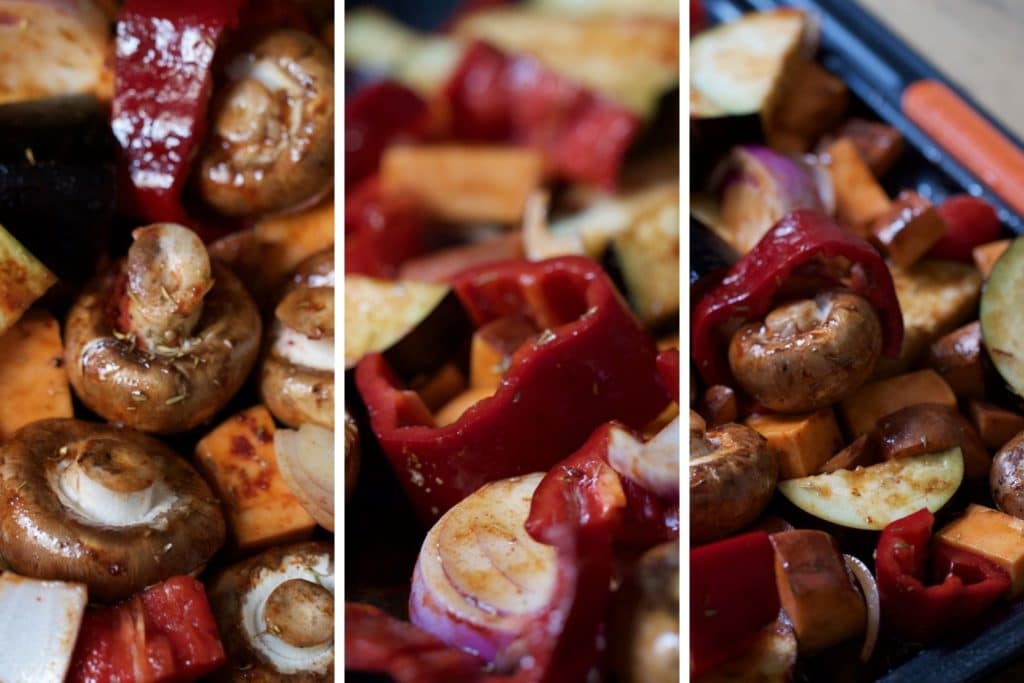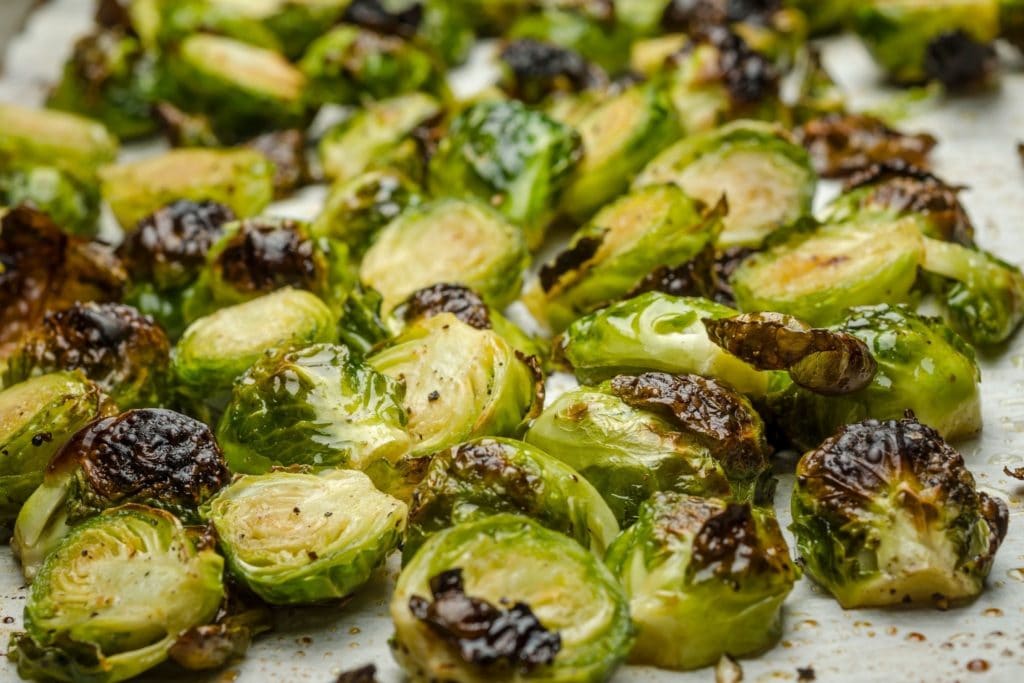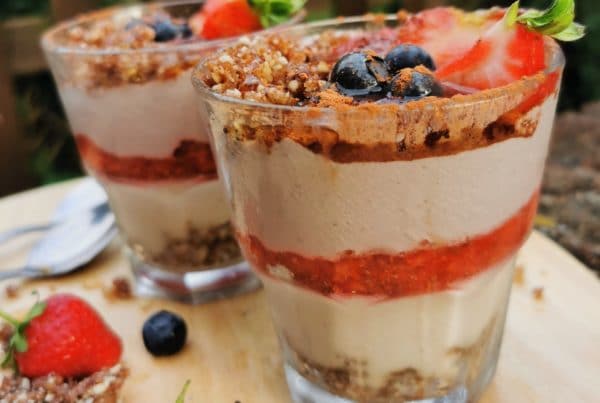There are a lot of articles online on sneaky ways to eat more vegetables, or how to trick your brain into liking vegetables, or on best ways to hide vegetables in your meals so you get more nutrients… I pause and wonder how does anyone think that this kind of approach can work? Unless you have some magic powers and know how to make broccoli taste like peanut butter, broccoli is still broccoli. In order for it, or any other kind of vegetable, to be featured on your plate you have to help yourself understand why it’s good for you and find ways to make it enjoyable for your palate.
Whoever thinks that real results can be achieved through self-deception should know better than underestimating the human mind by thinking it can be manipulated into doing something it doesn’t like or it’s not used to – it can work in the short run, but it hardly ever sticks. Whoever tries it will sooner or later end up saying “I’ve tried it, it’s not for me”, and so they give up on something they actually needed just because they were doing it wrong, sometimes without even knowing it.
For a healthy habit to stick, a more productive way, one that is more gentle and more respectful towards your body and your mind, is to challenge your logic, curiosity and creativity into finding what works for you and helps you achieve the results you want. Be honest with yourself about why you want or need this healthy habit in your life and invest time into finding a sustainable way to do it. Anything else is a waste of your time.
You may not like all the vegetables, legumes, fruits, nuts or seeds that exist out there and that’s perfectly fine, but you should definitely try and find the ones you do like, or find different ways to prepare and cook them so you can improve their taste – healthy is not the enemy of tasty, far from it.

So here are several ways for you to prepare and cook vegetables in a way that makes them more enjoyable to your palate. The more healthy foods you include in your diet, the faster you’ll retrain your taste buds and your eating choices will improve sooner than you think. It’s all a matter of wanting what’s best for you and not giving up until you’ve found it. There’s no one who deserves it more but yourself.
1. Sauté vegetables with herbs and vegetable stock
A simple way to infuse your veggies with mouth-watering flavours and aromas is to sauté them in a little bit of olive oil and a little bit more vegetable stock (to keep the fats and calories down and also to avoid your vegetables getting too brown or sticking to the pan) and herbs like oregano, basil, thyme.
2. Some vegetables go better with certain herbs and spices
-
Beetroots pair wonderfully with herbs like coriander, dill, ginger, sage, thyme and dill. You can use them to make soup, salad, or even a veggie stew.
-
Courgettes go really well with parsley, garlic, oregano. They can be used as a substitute for less healthy ingredients and you can have them as fried, stuffed, boats, noodles or strips.
-
Combine aubergines with garlic, sage, basil or rosemary. You can make a vegan lasagna to die for using this one, paired with some sweet potatoes and courgettes.
-
Broccoli goes really nice with oregano, rosemary, nutmeg, chives, thyme, garlic. It’s a very versatile vegetable and although most people stay away from it because of its false reputation as a bland veggie, to get the best out of it squeeze some lemon juice on it, whether you’re cooking it spicy, savoury, or creamy.

-
Pair cauliflower with dill, coriander, basil, curry, oregano or even mint. Also, mashed cauliflower tastes just like mash potatoes and it’s so much more nutritious.
-
Match Brussels sprouts with marjoram, parsley, rosemary or oregano. This one too has a bad rep because of its strong taste, but if you use the right herbs and spices you’ll end up wondering why you spent so much time avoiding it.
3. Blend them up!
Add the vegetables that aren’t your cup of tea to your smoothie and pair them with sweet fruits to balance the taste. Kale, broccoli, spinach all go really well with apple juice, avocados, pineapple or berries. Check out my Juices and Smoothies Recipes free eBook for more tips.
4. Use lemon juice
When you steam broccoli, spinach, brussels sprouts if you add a squeeze of lemon juice on top of them, it’ll completely improve their taste. Add some salt and pepper, maybe some oregano or thyme and it’s a whole different story.
5. Combine your veggies into a flavoursome soup
Creamy soups are your go-to if you want to include more veggies in your diet the easy way. Just grab some mushrooms, carrots, spinach, sauté them until smooth, add spices and herbs, blend them along with some pumpkin and sunflower seeds and in less than 10 minutes, you’ve sorted yourself with a very nutritious healthy meal.
6. Veggie dipping
An easy more appealing way to eat raw vegetables is to dip them in hummus or guacamole. This goes for carrots, cucumbers, celery, even broccoli or cauliflower sticks.

6. Roast them in the oven
Roasted vegetables taste different and most people like them more than steamed or raw, mainly because they caramelize in the oven and they get sweeter and crispier. There’s nothing easier than to chuck some carrots, broccoli, cauliflower, mushrooms, sweet potatoes, asparagus and even beetroot in a tray, sprinkle some olive oil, add a pinch of salt and pepper, oregano, basil or other herbs of your choice and throw them in the oven for 20 minutes. You’ll want to eat this all day every day.
8. Stuff them
Stuffed mushrooms, bell peppers, courgettes are something else! You get so many flavours in one go. You can stuff mushrooms with sun-dried tomatoes and garlic, bell peppers with rice, onions and carrots, courgettes with black beans and quinoa, the sky’s the limit!

9. Massage leafy greens like kale
If you want to make hearty greens part of your daily diet, but you’re dreading their bitter taste, you can massage them with a little salt, oil and sprinkle of lemon juice. It will make them softer, less bitter and easier to digest. That goes for kale, cabbage, broccoli – after you’ve massaged them for several minutes, leave them aside for all the flavours to settle and mix well.
10. Add a sweet glaze
Brussels sprouts, parsnips and turnips are earthy vegetables and they have a bitter taste which can linger even after you roast them. If you use a balsamic glaze, or maple syrup or even honey on top of them after you’ve taken them out of the oven, they’ll get a touch of sweetness that will make the entire dish taste way better.
11. Get creative in the kitchen and vary how you cook your veggies
Most people think that eating vegetables means only roasting, sautéing or having a salad with their main meal. While that’s also good, you can do so much more when it comes to diversifying your veggie recipes. They can easily be turned into main dishes, rather than just sides. You can also take one vegetable and cook it in a different way each time – you’ll soon realise that each method leads to different flavours and textures. While you may find out that you’re not crazy about steamed carrots, instead of giving up on them completely, by trying a different cooking method you can very well discover that you love roasted carrots with garlic and herbs. There are tons of vegetable recipes on the world wide web, they’re just at a click away, waiting for you to bring them to life. For plant-based recipes, you can check my free eBook, my Online Cooking Course, as well as my recipe blog.
12. Don’t overcook vegetables
No one enjoys mushy soggy food, so keep your eye on your veggies while cooking them and check them often. Also, a good thing to remember is that root vegetables (carrots, beets, parsnips) take longer to cook than leafy or watery ones (courgettes, spinach, broccoli, mushrooms) so make sure you time them accordingly.
13. Blanching
You can blanch your veggies if you want to get rid of the bitterness, no matter if you want to cook them or eat them raw, but it’s also recommended to blanch vegetables before freezing them – in this way, they preserve their flavour, colour and texture. Blanching means briefly dipping the vegetables into boiling water followed by an ice bath.
14. Try something new
If your category of vegetables includes only potatoes, peas or lettuce, try broadening your horizons and I guarantee you’ll be surprised. If you make this rule and avoid saying that you don’t like a particular vegetable unless you’ve tried it several times, prepared in several different ways, I have a feeling that veggies you never thought would end up on your plate will become your new favourites. Set a goal to try at least one new vegetable every week, but before you cook it, go online and just type in “how to make Brussels Sprouts (for instance) mouth-watering” – I just did that and I got over 50 different recipes just on the first search page. A little inspiration can make all the difference when it comes to cooking.

15. Chips with a twist
If you like to have something to nibble on at any hour of the day, instead of going for your regular crisps and snacks, try swapping them for roasted veggie sticks, at least once in a while. You can cut carrots, parsnips or sweet potatoes into sticks, toss in a bit of olive oil and some herbs and spices and bake in the oven until crisp. They are a way healthier alternative to potato chips.
***
Bottom line – cooking opens up a world of possibilities, right at your fingertips. All you need to do to enjoy its rewards it let yourself be curious and turn your kitchen into a playground. The more new things you try, to more you’ll be surprised. And the more vegetables you include in your diet, the more you’ll love them – proven fact!
Learning to listen to what your body needs, educating yourself to be more open, understanding how to make food work in your favour so you can enjoy your life more – it’s what it’s all about. I hope you have fun!
More Blogs / View All Blogs




